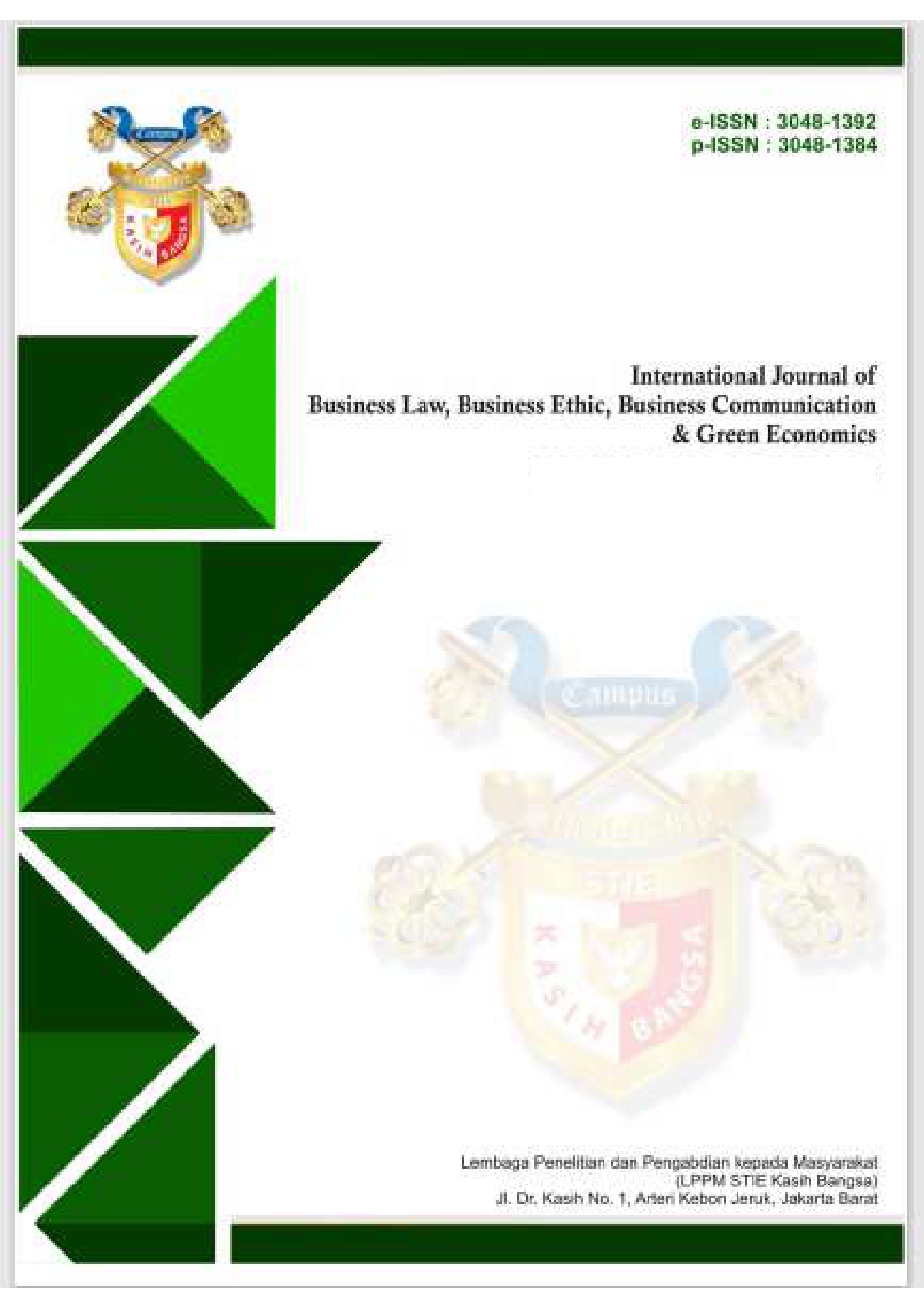Strategies and Challenges in Biodiversity Conservation: Solutions for Ecosystem Sustainability
DOI:
https://doi.org/10.70142/ijbge.v2i2.320Keywords:
Biodiversity conservation, Challenges, Solutions, Community empowerment, Innovative technologiesAbstract
This study aims to identify challenges and solutions in biodiversity conservation through a qualitative literature review. With increasing threats to biodiversity due to human activities, such as habitat loss, climate change, and pollution, conservation efforts are becoming increasingly important. Through a literature analysis covering a wide range of sources, this study found that the challenges faced are complex and often interconnected. Proposed solutions include empowering local communities, using innovative technologies, and improving policies and cross-sector collaboration. This study also shows the importance of evidence-based data to inform conservation policies and practices. While much effort has been made, the challenges require a more integrated and collaborative approach. The conclusions of this study emphasize the need for continued investment in research and development to protect biodiversity and ensure its sustainability for future generations.
References
Bennett, J.R., Maxwell, S.L., Martin, A.E., Chadès, I., Fahrig, L., & Gilbert, B. (2018). When to monitor and when to act: Value of information theory for multiple management units and limited budgets . Journal of Applied Ecology, 55(5), 2102–2113. https://doi.org/10.1111/1365-2664.13046
Bertsekas, D. (2012). Dynamic Programming and Optimal Control: Volume I. Athena Scientific.
Boakes, E. H., Rout, T. M., & Collen, B. (2015). Inferring species extinction: The use of sighting records . Methods in Ecology and Evolution, 6(6), 678–687. https://doi.org/10.1111/2041-210X.12336
Buxton, R.T., Avery-Gomm, S., Lin, H.Y., Smith, P.A., Cooke, S.J., & Bennett, J.R. (2020). Half of the resources in threatened species conservation plans are allocated to research and monitoring . Nature Communications, 11(1), 4668. https://doi.org/10.1038/s41467-020-18382-1
Camaclang, A.E., Chadès, I., Martin, T.G., & Possingham, H.P. (2022). Predicting the optimal amount of time to spend learning before designating protected habitat for threatened species . Methods in Ecology and Evolution, 13(3), 722–733.
https://doi.org/10.1111/2041-210X.13706
Chadès, I., McDonald-Madden, E., McCarthy, M. A., Wintle, B., Linkie, M., & Possingham, H. P. (2008). When to stop managing or surveying cryptic threatened species . Proceedings of the National Academy of Sciences USA, 105(37), 13936–13940.
https://doi.org/10.1073/pnas.0806813105
Hemming, V., Camaclang, A.E., Adams, M.S., Burgman, M., Carbeck, K., Carwardine, J., Chadès, I., et al. (2022). An introduction to decision science for conservation . Conservation Biology, 36(1), e13868. https://doi.org/10.1111/cobi.13868
He, F., & Hubbell, S. P. (2011). Species–area relationships always overestimate extinction rates from habitat loss . Nature, 473(7347), 368–371. https://doi.org/10.1038/nature09985
IPBES. (2019). Global Assessment Report on Biodiversity and Ecosystem Services . IPBES Secretariat.
IUCN. (2012). IUCN Red List Categories and Criteria: Version 3.1 (2nd ed.). IUCN Species Survival Commission.
Joseph, L.N., Field, S.A., Wilcox, C., & Possingham, H.P. (2006). Presence–absence vs. abundance of data for monitoring threatened species . Conservation Biology, 20(6), 1679–1687. https://doi.org/10.1111/j.1523-1739.2006.00459.x
Leclère, D., Obersteiner, M., Barrett, M., Butchart, S.H., Chaudhary, A., De Palma, A., DeClerck, F.A., et al. (2020). Bending the curve of terrestrial biodiversity requires an integrated strategy . Nature, 585(7826), 551–556. https://doi.org/10.1038/s41586-020-2705-y
Liu, G., Lu, X., Liu, Z., Xie, Z., Qi, X., Zhou, J., Hong, X., et al. (2022). The critically endangered Hainan gibbon (Nomascus hainanus) population increases but not at the maximum possible rate . International Journal of Primatology, 43(5), 932–945.
https://doi.org/10.1007/s10764-022-00350-2
McCarthy, M., & Possingham, H. P. (2012). The public should help decide which species to save and which to let go . The Conversation. https://theconversation.com/the-public-should-help-decide-which-species-to-save-and-which-to-let-go-7331
Silvestro, D., Goria, S., Sterner, T., & Antonelli, A. (2022). Improving biodiversity protection through artificial intelligence . Nature Sustainability, 5(5), 415–424. https://doi.org/10.1038/s41893-022-00910-5
Turvey, S.T., Traylor-Holzer, K., Wong, M., Bryant, J., Zeng, X., Hong, X., & Long, Y. (2016). How many remnant gibbon populations are left on Hainan? Testing the use of local ecological knowledge to detect cryptic threatened primates . American Journal of Primatology, 79(2), e22593. https://doi.org/10.1002/ajp.22593
United Nations. (2023). Transforming Our World: The 2030 Agenda for Sustainable Development . United Nations.
Wang, J., Song, X., Yousefi, R., & Jiang, Z. (2024). Optimal learning and management of threatened species . Management Science, 0(0).
https://doi.org/10.1287/mnsc.2023.01753
Williams, B. K., Szaro, R. C., & Shapiro, C. D. (2009). Adaptive management: The US Department of the Interior technical guide . Report, Department of the Interior, Adaptive Management Working Group, Washington, DC.
















